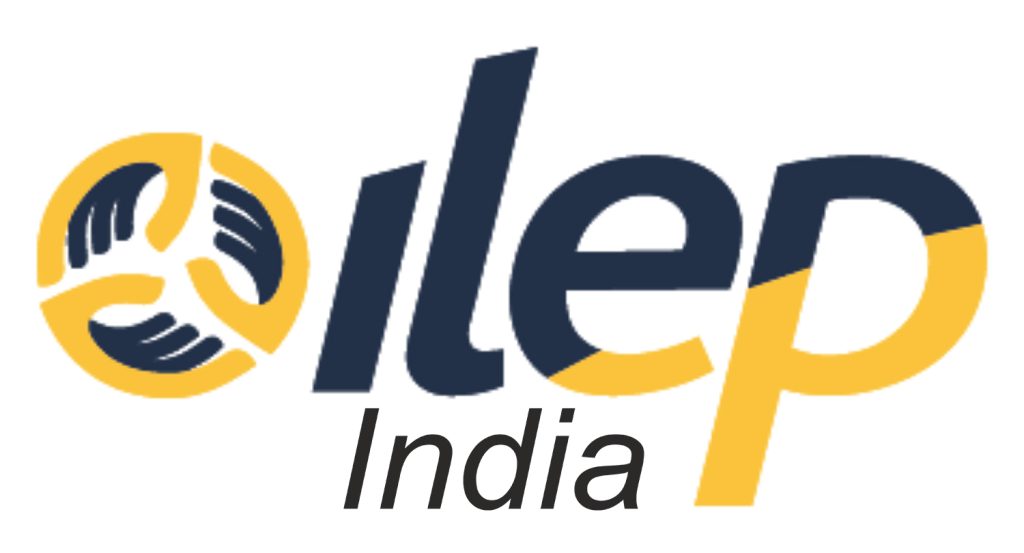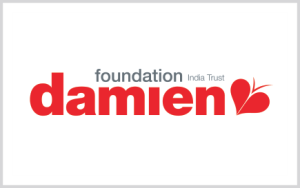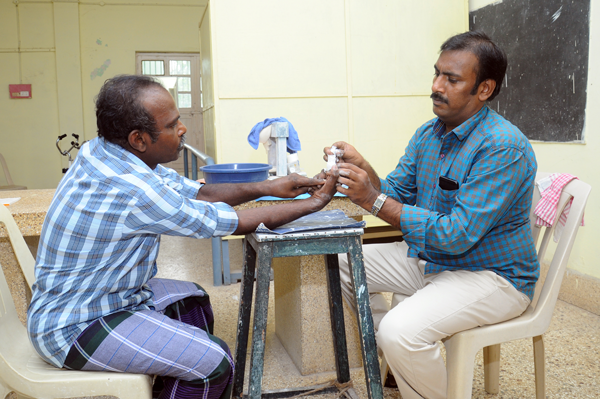Zero Discrimination
Economic Empowerment & Socio-Economic Rehabilitation
Functional impact of Leprosy: The impairments associated with leprosy can make it difficult for people to conduct daily activities. For example, people who lose feeling or strength in their hands will have more difficulty with simple tasks, such as threading a needle or holding a spoon; and people who are unable to lift their foot (“foot drop”) will have difficulty walking. An estimated 20–25% of people affected by leprosy experience disability. Early detection of leprosy and proper treatment combined with regular check-ups are key to preventing disabilities.
Social impact of Leprosy: Often, it is not the physical impairments or even the functional limitations that cause the greatest problems for people affected by leprosy. Instead, it is stigma and social exclusion that have the greatest impact. The persons those who are affected with leprosy and if their deformity is visible, they are mostly neglected and often unable to find work or marry and are therefore dependent on others for financial support and care. Self-stigma is also common – people start blaming themselves for their disease, which results in feelings of worthlessness and loss of self-esteem, hope and purpose.
Their issues have highlighted elsewhere that women with disabilities are often more vulnerable and disadvantaged in society. This is also true for women with leprosy. A general lack of awareness and knowledge within communities about leprosy, e.g. whether it is inherited, infectious or curable, has an impact on relationships, marriage and family. Many women and men have been abandoned by their spouses, particularly if they were only recently married, and for many unmarried women persons affected by leprosy can severely restrict their marriage prospects.
Economic impact of Leprosy: Leprosy can have a considerable economic impact on individuals and their families. People may be unable to work, or may not be able to continue working, owing to impairments associated with leprosy. People may also lose their jobs because of the stigma related to leprosy. For example, people are often reluctant to buy goods, such as food products from a person affected by leprosy, for fear of contamination. There are also treatment-related costs. While drug treatment is free, access to health care in low-income countries like India is often associated with travel costs and loss of wages. There may also be additional treatment costs, e.g. hospital admissions or the purchase of protective footwear, orthoses or prostheses, therefore many people may be discouraged from accessing services because of these costs. As a result, they may develop secondary conditions and the impact of their disability may increase.
Educational Impact of Leprosy: Children affected by leprosy or if their parents or relatives affected, they may suffer in accessing education due to stigma and discrimination in school or community. As a result, the children have chances to be denied access to school, forced to drop out, isolated from former friends, hidden away by their families, or required to work and earn an income. There are suitable number of ways whereby social rehabilitation programmes can ensure that children (and adults) are able to access education opportunities in their communities.
Livelihood Impact of Leprosy: People with leprosy are often extremely poor; additional issues, such as stigma, discrimination and disability associated with leprosy often restrict opportunities for work, which increases their poverty. Skills training and decent work can provide a strong entry point for integration into society and are a mechanism for breaking the cycle of isolation, dependency and poverty commonly associated with disability. When people with disabilities can make financial contributions to their families, they often report increased participation in family activities, especially in decision-making. There are many social rehabilitation programmes which can support persons affected by leprosy to have a decent living.
Damien Foundation Intervention on Socio-Economic Rehabilitation & Integration:
Damien Foundation India Trust’s Livelihood Enhancement Programme (LEP) believes in empowerment through vocational education for affected youth, safe shelter for family and income generation program to enhance income, provide security and dignity for male or female adults affected by Leprosy. The intervention is comprehensive as these are among most ostracized segment- both as individuals and families living in eight projects States in India.
Intervention on Socio-economic rehabilitation support: Entrepreneurship or Socio-economic rehabilitation support are provided for the persons affected by leprosy and TB. The support is provided based on the practical feasibility, mobility, skills, experience / exposure of the person to the business or family members would support the business seeing the viability of the proposal. Leprosy is a double cursed disease, persons affected by leprosy especially with deformity are isolated, neglected & stigmatized which leads to poverty. Overcome poverty and integrate them into mainstream society income generation activity through socio-economic rehabilitation plays a vital role and enable them to have a great future ahead. The social and economic integration of persons affected by leprosy is an important mean for promoting human dignity, reducing stigma, increasing economic independence by efficiently using the community resources. There is no complete inventory available on the number of persons affected by leprosy living in colonies nor for those living in the community, but there is a challenge for the second-generation towards discriminated against even though they do not have leprosy. Education of children affected by leprosy and children of persons affected by leprosy is focused by Damien Foundation. Basic education is provided by the Govt and DFIT sponsors children affected by leprosy from their schooling and children of parents affected by leprosy only for higher education and job-oriented courses. Around 50% of the colonies in Bihar, Jharkhand and other backward states require renovation of houses and basic amenities like drinking water, toilets, and electricity connection.
Persons affected by leprosy living in the community:
Care after cure services is provided by Damien Foundation through Socio economic rehabilitation programme, where the livelihood of the persons is enhanced, thereby of persons affected by leprosy becomes important. A successful community rehabilitation can be achieved through the combined efforts of individuals, their families, the community acceptance, appropriate health, education, vocational training, and their right to entitlements. It also has a strong impact on reducing stigma and discrimination. In general at least 30% of the persons affected by leprosy are in need of livelihood support, it may be more in Bihar, Jharkhand and other backward states. The needy persons are identified and supported for income generation like livestock, petty shops, and education support for their children and vocational training which will enable persons to work and earn income on their own.
Approximately 30,000 persons affected by leprosy with disabilities are living in project districts supported by DFIT. It is estimated that around 7500 of them need require economic rehabilitation support. This support is given based on the priority scale developed by DFIT and all eligible affected persons will be covered in a phased manner through the collaboration with government. and civil society partnership. Damien Foundation will be able to accomplish social rehabilitation to the needy by the year 2028 in its project States.











